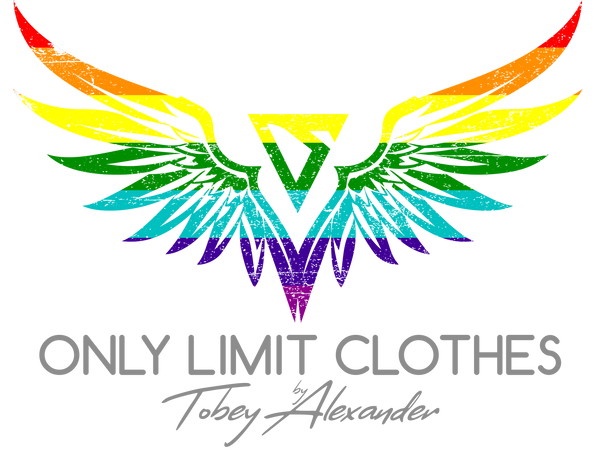Beyond Labels and Stereotypes: The Reality of Autism, ADHD, Dyslexia, and More
In a world that is slowly but surely embracing the concept of neurodiversity, individuals with conditions like autism, ADHD, dyslexia, and more are fighting an ongoing battle against preconceived ideas and stereotypes. Being autistic myself, I've encountered countless instances where people choose to ignore hidden diversity simply because it doesn't align with their narrow understanding of these conditions. It's time we address this issue and promote genuine acceptance and understanding.
The Challenge of Unseen Diversity
The term "neurodiversity" encompasses a broad spectrum of neurological differences, including autism, ADHD, dyslexia, and more. Each person's experience with these conditions is unique, making it challenging to fit them into one specific mould. However, society often clings to preconceived notions of what it means to be autistic, ADHD, or dyslexic, based on outdated media portrayals.
The Label Debate: Formal Diagnosis vs. Self-Identification
One of the primary challenges individuals like me face is the ongoing debate between formal diagnosis and self-identification. In the UK, the process of obtaining a formal ASD diagnosis can be painfully slow, taking anywhere from three to five years. During this time, self-identification becomes a crucial part of self-awareness. Yet, many individuals are dismissed or even ridiculed when they open up about their neurodivergent experiences without a formal label.
It's essential to understand that not everyone seeks a label and it isn’t some a trendy accessory or the current “fad” as I have heard before. We know ourselves well enough to recognise our neurodivergent traits, whether or not they fit neatly into diagnostic criteria. By dismissing self-identification, society is not only being dismissive but also damaging to the mental health and self-esteem of neurodivergent individuals.
"You Don't Look or Act Autistic" – Challenging Stereotypes
One of the most hurtful and common stereotypes that individuals like me face is the notion that we "don't look" or "don't act" autistic, ADHD, or dyslexic. This stereotype is deeply rooted in the historical portrayal of neurodivergent individuals as socially isolated, non-verbal, or exclusively male. However, these stereotypes are far from the truth. Neurodiversity encompasses a vast range of individuals, each with their unique strengths and challenges.
It's essential to move beyond these outdated stereotypes and recognise that neurodivergent individuals may be highly functional, social, and talented in various ways. Our neurodiversity doesn't have a one-size-fits-all appearance. We come in all shapes, sizes, and personalities, just like anyone else.
The Impact of Hidden Diversity on Mental Health
The constant need to justify or prove our neurodiversity can take a severe toll on mental health. The invalidation and disbelief from others only exacerbate feelings of isolation and self-doubt. Mental health challenges often accompany neurodivergent conditions, and the added pressure of navigating societal expectations can be overwhelming.
Genuine Autism Awareness and Acceptance
It's high time that society moves beyond the culture of lip service when it comes to neurodiversity. Instead, we need to cultivate genuine awareness and acceptance. This begins by understanding that neurodiversity is not a new trend or a fashionable label; it's a recognition of the diversity in human neurological wiring. The neurodivergent community seeks nothing more than the acceptance and understanding that everyone deserves.
Embracing Neurospicy: A Call for True Inclusion
The term "neurospicy" emphasises the need for a more diverse and inclusive understanding of neurodiversity. It's time we embrace the unique flavours of neurodiversity that each individual brings to the table. By doing so, we create a society that values and celebrates differences instead of dismissing them.
What Can You Do to Support Hidden Diversity?
- Educate Yourself: Take the time to learn about different neurodivergent conditions and their wide-ranging manifestations.
- Listen and Believe: When someone opens up about their neurodivergent experiences, listen and believe them. Validation is a powerful tool.
- Challenge Stereotypes: Refrain from perpetuating stereotypes about what it means to be autistic, ADHD, or dyslexic. Encourage others to do the same.
- Advocate for Change: Support initiatives and organisations that promote genuine neurodiversity awareness and acceptance.
- Create Safe Spaces: Foster environments where neurodivergent individuals can be themselves without judgment or scepticism.
In conclusion, hidden diversity is a real and crucial aspect of the neurodiversity landscape. Individuals like me who don't fit neatly into preconceived notions deserve to be heard, validated, and accepted. It's time to move beyond the labels and stereotypes and embrace the rich tapestry of neurodiversity that makes our world more colourful and inclusive. Neurospicy is the future, and we all have a role to play in making it a reality.

